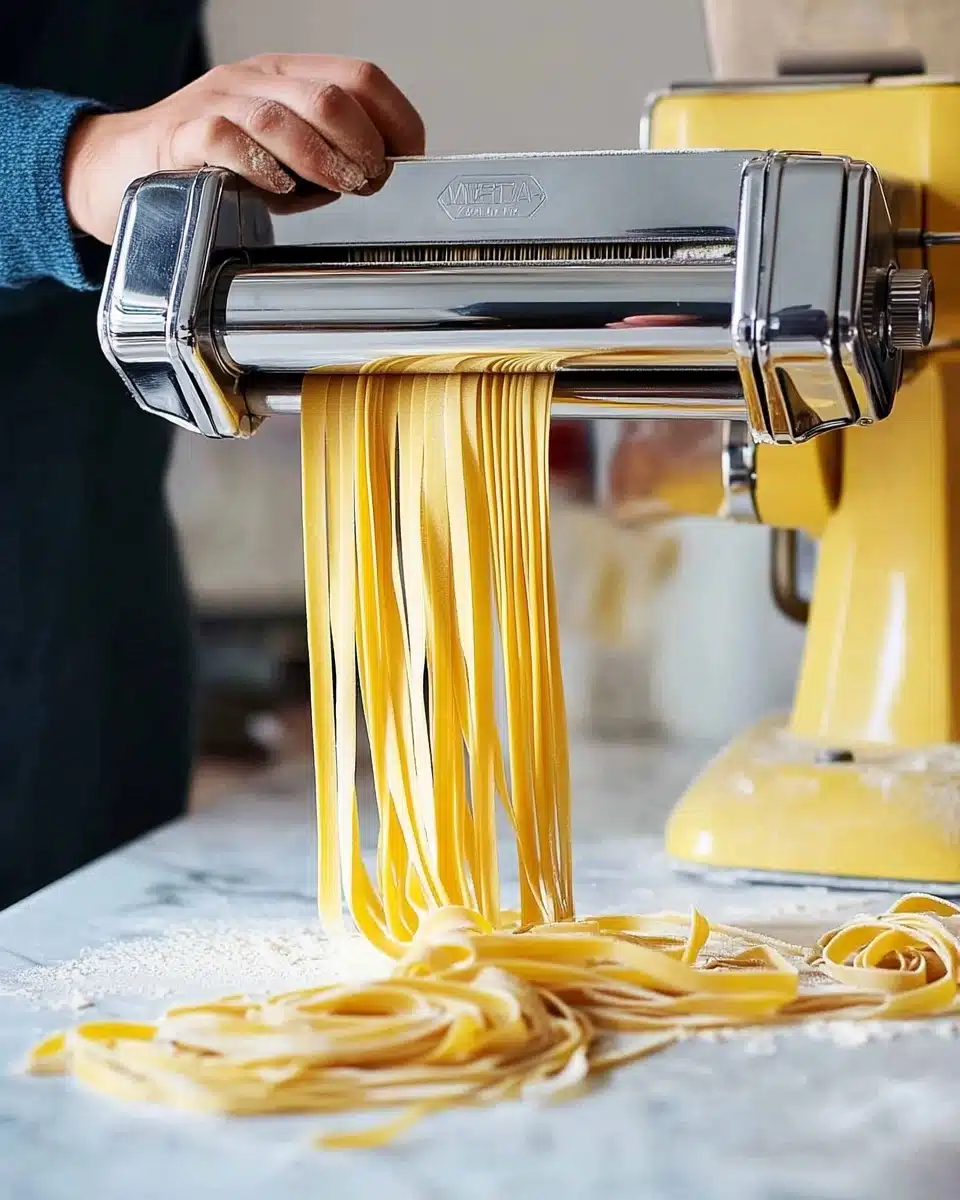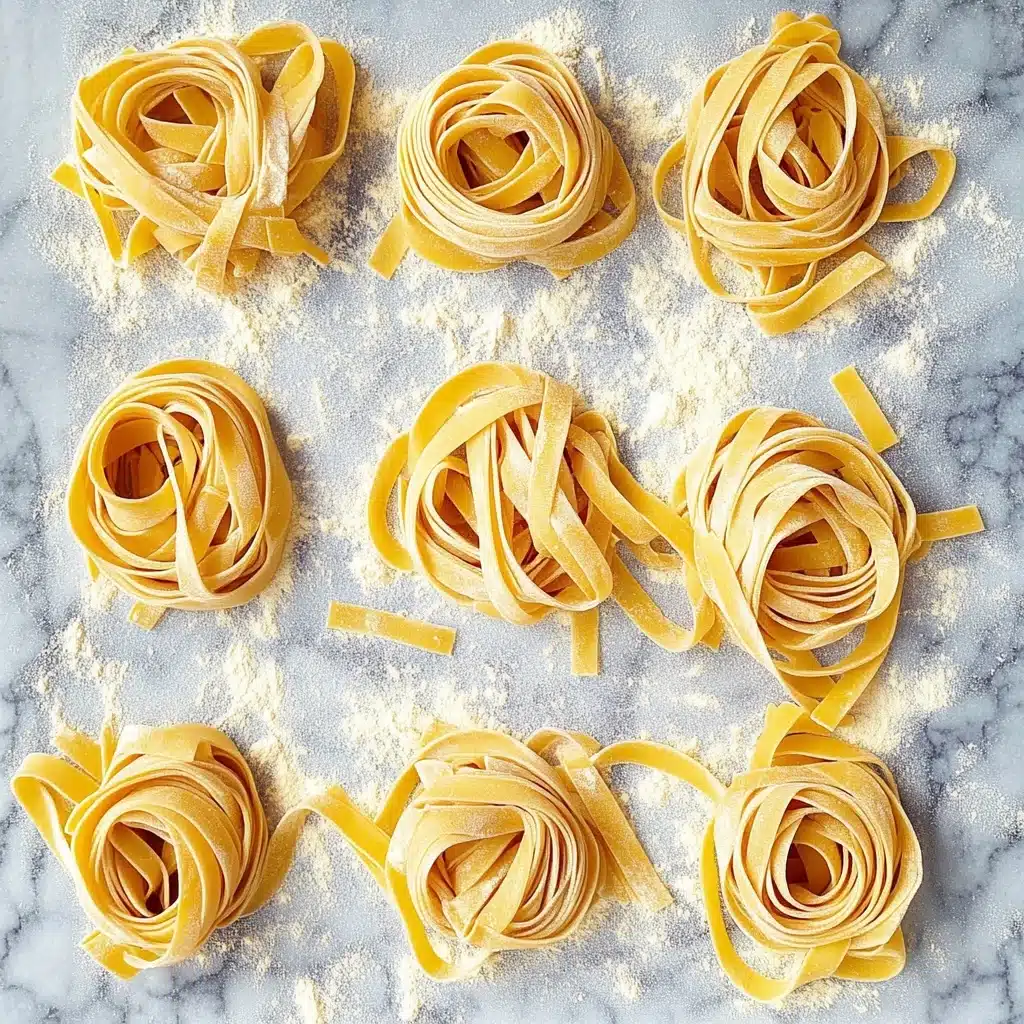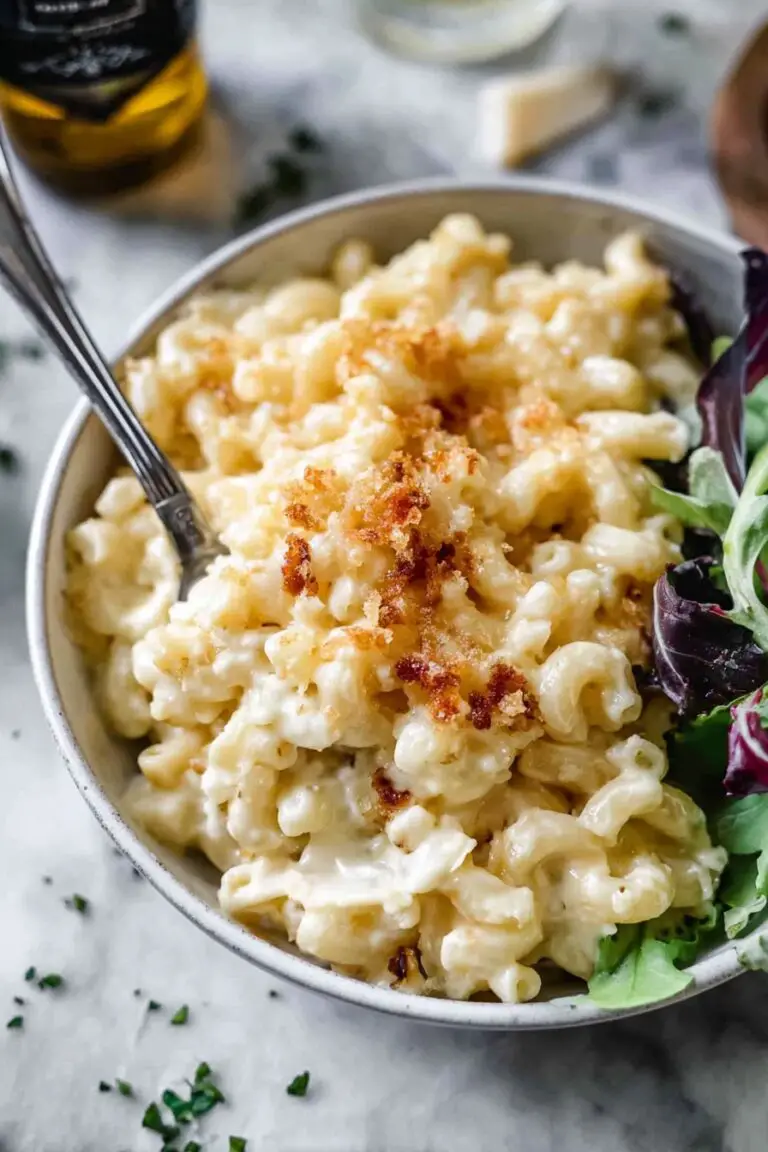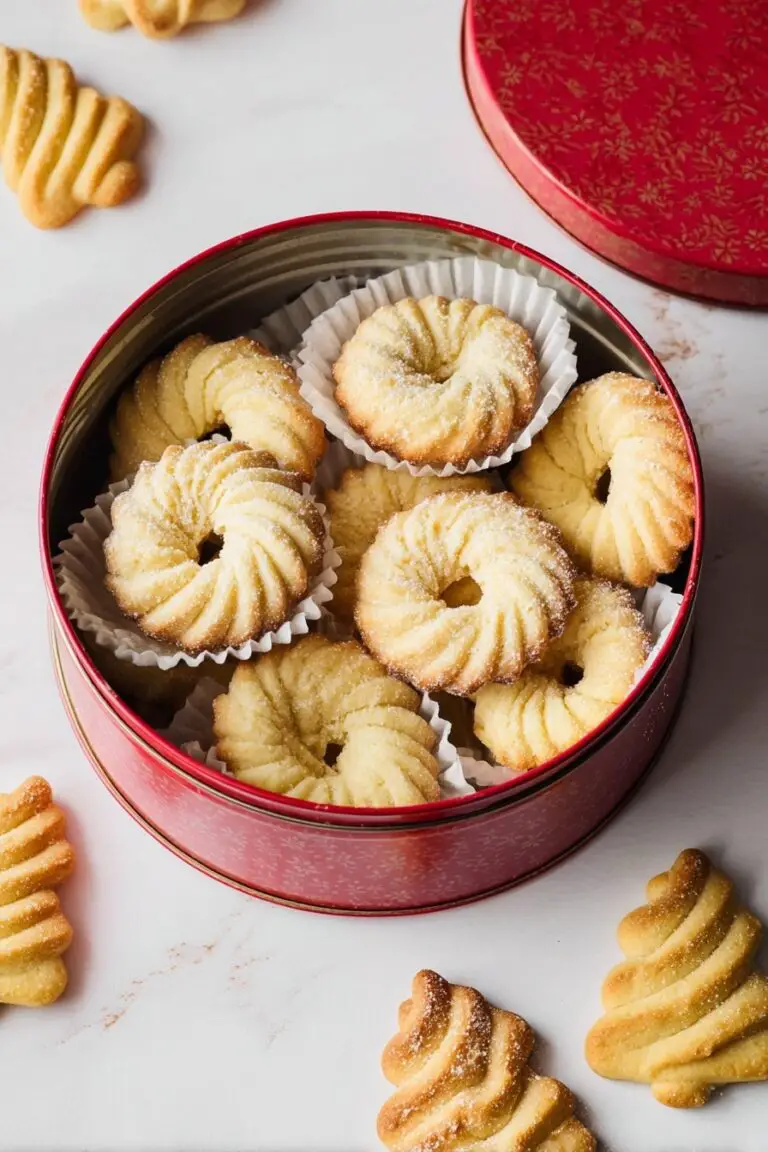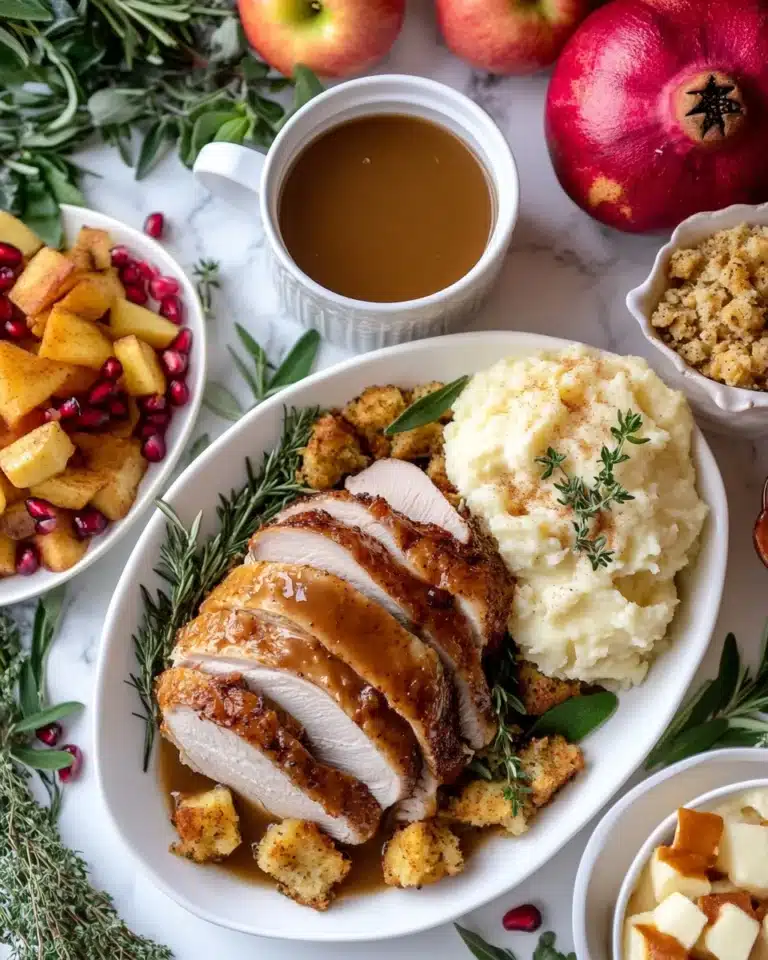There’s nothing quite like the magic of Homemade Fresh Pasta—soft, golden ribbons that soak up every drop of your favorite sauce, all made with just four simple ingredients and your own two hands. Whether you’re new to pasta-making or craving traditions that feel straight out of an Italian kitchen, this recipe brings comfort, flavor, and a touch of culinary pride to your table.
Why You’ll Love This Recipe
- Incredible Texture: Each bite is silky and tender, miles above the boxed stuff you find at the store.
- Simple Ingredients: With just flour, eggs, olive oil, and salt, you likely already have everything you need in your kitchen.
- Customizable for Every Occasion: Shape your pasta however you like—fettuccine, tagliatelle, or pappardelle, the dough is easy-going and forgiving.
- Fun, Hands-On Experience: Making Homemade Fresh Pasta is soothing, rewarding, and a perfect activity for solo chefs or cooking with loved ones.
Ingredients You’ll Need
These four simple ingredients create the backbone of Homemade Fresh Pasta. Each plays a crucial role in making your dough silky, elastic, and deeply flavorful, resulting in a luxurious pasta that’s ready for any sauce.
- All-purpose flour: The main structure of your dough. Its protein content gives the perfect balance of bite and tenderness. If you have “00” flour, you can swap it in for an extra delicate finish.
- Large eggs: These bring moisture, fat, color, and richness, all of which give the pasta its signature flavor and golden hue.
- Sea salt: Just a hint elevates all the other flavors, seasoning the dough from the inside out—plus, it enhances the color.
- Extra-virgin olive oil: A little goes a long way, adding subtle flavor and supple texture, making the dough easier to handle and roll out smooth.
Variations
Once you’ve mastered classic Homemade Fresh Pasta, it’s a breeze to switch things up. Whether you’re avoiding gluten, love vibrant colors, or want to play with different shapes, consider these easy twists to make the recipe your own!
- Spinach or Beet Pasta: Blend cooked spinach or roasted beet with your eggs for stunning green or pink dough—and a subtle earthy flavor.
- Whole Wheat Version: Swap out part of the all-purpose flour for whole wheat to add a nutty, rustic taste and extra nutrition.
- Gluten-Free: Use a gluten-free all-purpose blend and add a splash more olive oil for a dough that feels silky, not crumbly.
- Herbed Pasta: Knead finely chopped fresh herbs (like basil or parsley) right into your dough for gorgeous flecks and a pop of flavor in every bite.
How to Make Homemade Fresh Pasta
Step 1: Make the Dough Nest
Start by making a little volcano on your work surface: pour the flour into a mound and create a deep “nest” in the center with your fingers. Into this well, crack in the eggs, drizzle in the olive oil, and sprinkle the sea salt. With a fork, gently break up the eggs and start pulling the flour from the edges toward the center. This classic technique keeps the eggs contained while you gradually create a thick, rich batter right on your countertop.
Step 2: Bring the Dough Together
Using your hands, gather up the flour and work it into the egg mixture, kneading and blending until you form a shaggy, rough ball. Don’t panic if it starts out crumbly or dry—keep working the mixture, pressing and folding until it starts to stick together and feel like dough. If there are still stubborn dry bits, add just a dab of water at a time. If your hands get sticky, dust them with a little extra flour—Homemade Fresh Pasta dough loves a little patience!
Step 3: Knead and Rest
Knead your dough with the heels of your hands, folding and pressing for 8 to 10 minutes. You’ll feel the dough transform beneath your hands, becoming glossy, smooth, and wonderfully elastic. Once it’s cohesive, wrap it tightly in plastic and let it rest at room temperature for at least 30 minutes. This pause allows the gluten to relax, so your pasta will roll out as smooth as silk.
Step 4: Roll and Fold
Cut your rested dough into four pieces for easy handling. Flatten each into an oval and run it through your pasta roller (or a rolling pin if you’re working by hand) on the widest setting. After the first few passes, fold the dough like a letter—this folding-and-rolling step helps create an even, sturdy sheet that’ll hold up to cutting and cooking.
Step 5: Thin and Cut the Dough
Gradually roll your dough thinner by moving up a setting each time, typically going three times on each of the first few settings, then once on levels 4, 5, and 6. Dust with a little flour between folds to prevent sticking. Lay your sheets on a floured baking tray, sprinkle more flour on every layer, and keep going until you’ve transformed every piece of dough into a gorgeous sheet.
Step 6: Slice and Cook
Attach your pasta cutter and feed each sheet through to create your noodle shape—fettuccine is classic, but feel free to experiment. Toss your cut pasta in a little extra flour so the strands stay separate. Drop into salted, boiling water and cook for just 1–2 minutes. Homemade Fresh Pasta cooks fast—taste early and drain as soon as it’s wonderfully tender but still toothsome!
Pro Tips for Making Homemade Fresh Pasta
- The Egg Test: Use room-temperature eggs—they blend more smoothly with the flour and help give your pasta a gorgeous, uniform yellow hue.
- Resting Matters: Don’t skip the resting step, even if you’re in a rush—gluten needs that downtime for a supple, rollable dough.
- Flour Management: Always keep a little extra flour handy for dusting your dough, countertop, and rolling pin to keep sticking at bay without drying out your pasta.
- Thin for the Win: Remember, fresh pasta expands as it cooks, so roll sheets a bit thinner than you think for a perfectly tender bite.
How to Serve Homemade Fresh Pasta
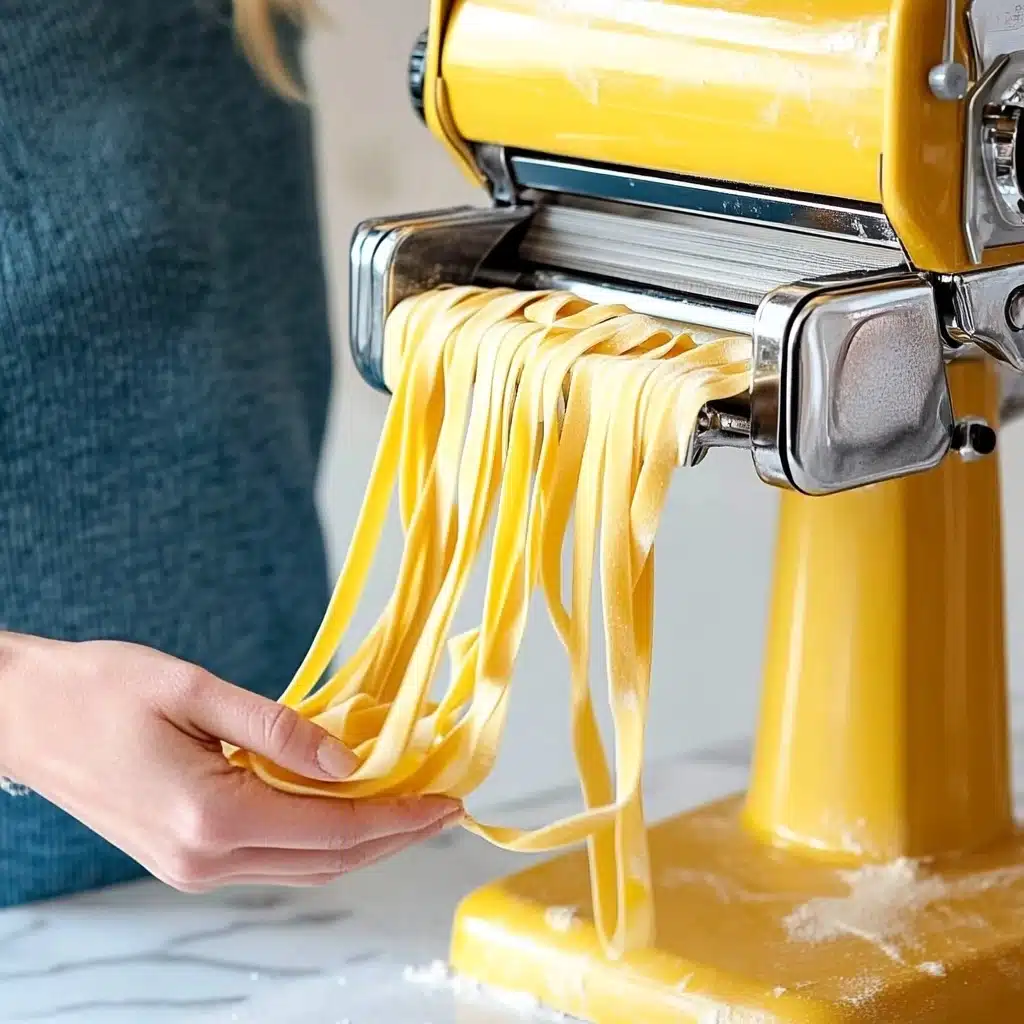
Garnishes
Nothing completes Homemade Fresh Pasta like a generous shower of freshly grated Parmesan, a drizzle of peppery olive oil, or delicate ribbons of basil. For a pop of color, try a scatter of lemon zest or crispy garlic chips—each one adds both visual flair and a boost of flavor.
Side Dishes
Pair your pasta masterpiece with a classic garlic bread, a crisp green salad tossed with lemon vinaigrette, or roasted seasonal vegetables. These simple sides keep the spotlight on your Homemade Fresh Pasta while making the meal feel balanced and celebratory.
Creative Ways to Present
Twirl your cooked noodles into elegant nests, stack them in little spirals on individual plates, or serve family-style in a rustic wooden bowl. For an extra-special touch, sprinkle edible flowers or herby microgreens on top—your Homemade Fresh Pasta will be as beautiful as it is delicious.
Make Ahead and Storage
Storing Leftovers
If you happen to have leftovers (lucky you!), transfer cooled pasta to an airtight container and store it in the refrigerator for up to 3 days. A tiny drizzle of olive oil before storing helps keep strands from sticking together.
Freezing
To freeze, lay freshly cut pasta in loose nests on a floured baking sheet, freeze until solid, and then transfer to freezer bags. Homemade Fresh Pasta can be cooked straight from the freezer—no thawing needed—for a quick, soul-warming dinner any night.
Reheating
Reheat gently in a pan with a splash of water or extra sauce. Overheating can make pasta gummy, so keep the heat low and toss often until warmed through.
FAQs
-
Can I make Homemade Fresh Pasta without a pasta machine?
Absolutely! While a machine makes things a bit faster, you can easily roll out pasta dough by hand using a rolling pin. Just take your time and dust liberally with flour to prevent sticking—the extra effort is so worth it.
-
What flour is best for Homemade Fresh Pasta?
All-purpose flour works perfectly for most homemade pasta, producing a tender bite and nice elasticity. If you want to go extra authentic, look for Italian “00” flour, which makes the noodles super silky, or try semolina for a rustic touch.
-
How do I keep my Homemade Fresh Pasta from sticking together?
Generously dust your pasta sheets and noodles with flour before, during, and after cutting. If you’re not cooking the pasta immediately, lay the noodles in loose nests on a floured tray—this helps each strand separate easily when boiled.
-
How long should I cook Homemade Fresh Pasta?
Fresh pasta cooks so much faster than dried—usually just 1 to 2 minutes in boiling salted water. It’s ready as soon as the noodles float to the top and taste irresistibly tender but still have a slight bite (al dente).
Final Thoughts
If you’ve never tried making Homemade Fresh Pasta before, now’s the perfect moment to roll up your sleeves and dive in. It’s rewarding, irresistible, and guaranteed to make you feel like a true artisan—one delicious forkful at a time. I hope you enjoy every silky, heartwarming bite!
Print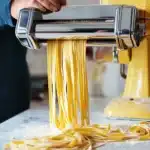
Homemade Fresh Pasta Recipe
- Prep Time: 30 minutes
- Cook Time: 2 minutes
- Total Time: 1 hour 2 minutes
- Yield: 3 to 4 servings
- Category: Stovetop
- Method: Stovetop
- Cuisine: Italian
Description
Learn how to make delicious homemade pasta from scratch with this easy recipe. With just a few simple ingredients, you can create fresh pasta that is far superior to store-bought options.
Ingredients
All-Purpose Flour:
2 cups (spooned & leveled)Eggs:
3 largeSea Salt:
1/2 teaspoonExtra-Virgin Olive Oil:
1/2 tablespoonInstructions
- Prepare the Dough: Create a nest with the flour on a clean surface. Add eggs, olive oil, and salt to the center. Gently mix with a fork, incorporating the flour gradually. Knead the dough until smooth.
- Rest the Dough: Shape the dough into a ball, wrap in plastic, and let it rest for 30 minutes.
- Roll Out the Pasta: Divide the dough, roll it through a pasta maker, and cut into desired shapes.
- Cook the Pasta: Boil the fresh pasta in salted water for 1 to 2 minutes.
Nutrition
- Serving Size: 1 serving
- Calories: 300
- Sugar: 1g
- Sodium: 200mg
- Fat: 4g
- Saturated Fat: 1g
- Unsaturated Fat: 3g
- Trans Fat: 0g
- Carbohydrates: 55g
- Fiber: 2g
- Protein: 10g
- Cholesterol: 140mg

